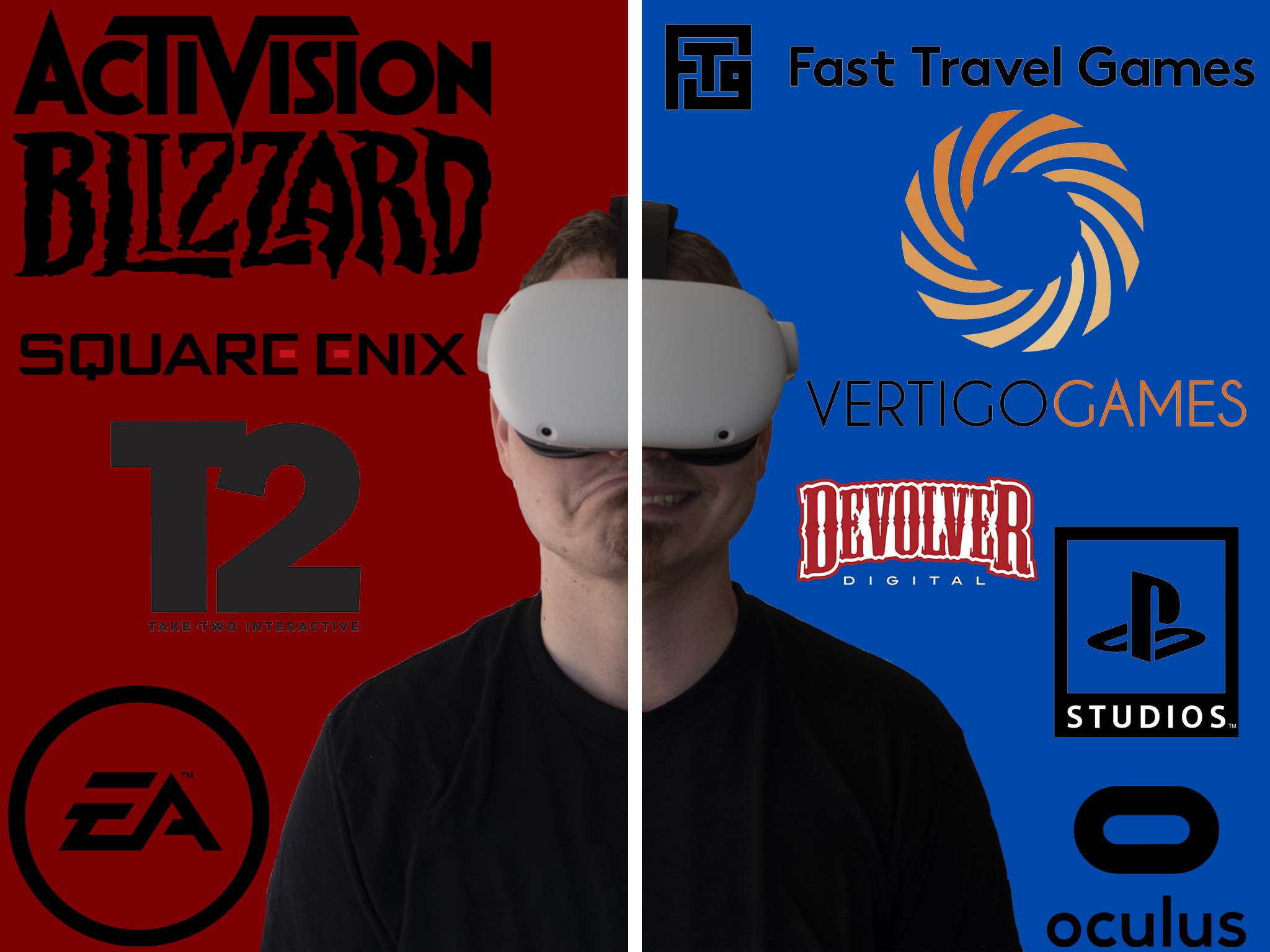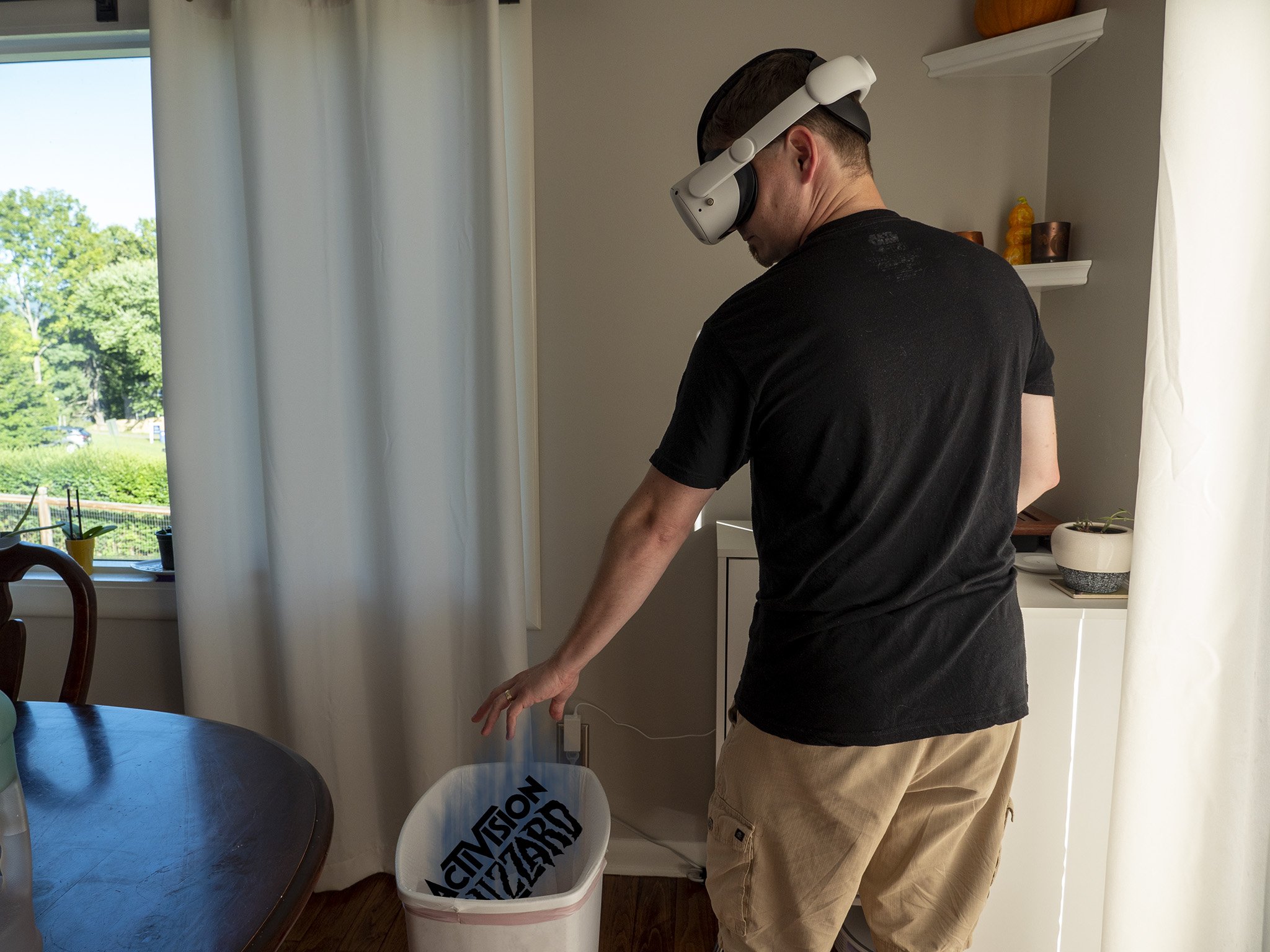 Source: Nick Sutrich / Android Central
Source: Nick Sutrich / Android Central
As VR continues to grow in leaps and bounds thanks to headsets like the Oculus Quest 2, the drastic landscape change has created new challenges for developers to hurdle over. The current state of VR development is akin to the Wild West, with immature development tools, difficulty sharing resources, and a totally different landscape of hardware, social media influencers, media outlets with regular coverage, and unfamiliar names and IPs.
But, with the exception of the development tools, there’s nothing wrong with any of those other hurdles. With the news that developer Fast Travel Games — the name behind titles like Budget Cuts 2, The Curious Tale of the Stolen Pets, and Wraith: The Oblivion – Afterlife — will be entering the market as one of the few VR publishers, it’s clear that VR is finally growing into its own in every way.
Studios like Fast Travel Games and Vertigo Games before it are paving the way for the future of VR in a way a big publisher simply cannot. While big publishers come with big-name IPs and big money, they also come with unrealistic sales expectations, development crunch, and toxic work environments. Countless examples can be found over the years, and VR doesn’t need any of it to sully up its newfound reputation as a place to experience wholly unique content.
What is a publisher, anyway?
In a nutshell, a publisher is a group or company that lends money to a developer to complete a project. Once a deal is struck, a developer typically enters a contract agreement to finish a game in a specified time frame. Sometimes, this negotiation period includes other IP stakeholders if it’s a branded project like Star Wars: Tales From the Galaxy’s Edge, for example.
During development, a publisher might help the developer grow by providing hiring help or HR assistance. It might also help the developer with general project management and planning through meetings or other ways of communication. As development nears its end, a publisher can participate in quality assurance testing of the game and, finally, in marketing the game to ensure the investment produces fruit.
Publishers can also help with copyright and licensing, including licensing for merchandise and other post-publishing revenue sources. After release, the developer and publisher split the revenue according to the contract.
Publishers used to be a requirement for most developers when physical copies of games were the primary (or only) means of purchase. With the rise of digital distribution, many developers, especially smaller studios, have opted to self-publish their titles. This comes with risk since there’s no larger company to draw capital from, but it also means creative freedom and the ability to work at your own pace — given that there’s still enough money to draw from, of course.
Big names, big problems

 Source: Nick Sutrich / Android Central
Source: Nick Sutrich / Android Central
If you look at EA’s games page, you’ll notice a trend. The list is filled with well-known series and annual franchise releases, peppered with a few new names here and there. Even still, most of those new names are from tiny development houses and likely required very little investment compared to the bigger-name brands. They’re a way of trying to convince people of a publishing house’s originality while simultaneously proving the opposite.
Unfettered corporate bureaucracy often saps the creativity from big publishing houses and their developers.
At the end of the day, big publishers are publicly traded companies that are more focused on their bottom line than on the games industry as an art form. Of course, everyone wants success, but a big publisher is more interested in monetary success than pushing a medium or idea forward. Instead, their focus is on core titles and annual cash cows, which then help fund smaller projects throughout the year.
Anshel Sag, a senior analyst at Moor Insights & Strategy, said the traditional video game industry has followed in the footsteps of the rest of the entertainment industry.
“It has rapidly created many of the same kinds of risk-averse behaviors, where you have a publisher continuing to push an IP that has kind of run its course,” he said. “But the publisher refuses to acknowledge that and continues to shove ideas down gamers throats that they don’t want.”
Big publishers follow very risk-averse behavioral patterns. It’s the nature of the beast and one of the biggest simultaneous positive and negative aspects of the business. Create a cash cow, and you’re guaranteed years of monetary success, but it also means your creative freedom is tied up in the process.
Big publishers can certainly add a level of notoriety to the market that a smaller name couldn’t, and it could mean the difference between selling ten thousand copies and one million or more.
As we’ve seen from the Activision Blizzard lawsuit — and several other prominent examples of corporate scandals over the years — big publishers can come with big problems. Typically, these problems only apply to in-house development studios and not to contracted indie studios, but they’re well worth noting because of the distrust and discontent they create.
From social media response alone, it’s clear that big publishers aren’t usually seen in a positive light. Some may even think them to be a death knell to any kind of creativity. The most common complaints usually revolve around “unaccountable corporate bureaucrats” that treat C-levels better than the rest of the company.
Evan Kubes, president and co-founder of MKM Group, says big publishers still have a place in the market. “They have the most marketing dollars available to spend, which means they’re going to be necessary to really help popularize the VR genres coming out better than any indie publisher can.”
Big publishers can undoubtedly add a level of notoriety to the market that a smaller name couldn’t, and it could mean the difference between selling ten thousand copies and one million or more. But what are the metrics of success for the industry? Do we only consider something a success when it sells tens of millions of units, or should we be focusing on the success of the lives of the developers?
But big publishers often have unrealistic expectations of sales goals because their project budgets are equally unrealistic.
Video games, like most sectors of the entertainment industry, are an art form. Success in those industries is often defined by the ability to create your art, pay the bills, and still have something left over to have fun. After all, getting paid “in exposure” is the fastest way to killing an artist’s career.
Big money can also preclude big failure. Back in 2013, when the first Tomb Raider series reboot was released, it sold over 3.4 million copies in its first four weeks alone. To any smaller developer, that means the difference between coding as a side job and being an overnight millionaire. To a giant publisher like Square Enix, however, it actually meant commercial failure because the game didn’t meet sales goals.
With a total active install base of just over 10 million, that’s the approximate number of PSVR, PC VR, and Oculus Quest users combined, VR still has a lot of room to grow before it really can catch the eye of these big publishers. Compare that to the PS4, for instance, one of the most successful consoles of all time and has sold well over 110 million units worldwide.
A boutique can cater to a niche

 Source: Nick Sutrich / Android Central
Source: Nick Sutrich / Android Central
In Sag’s estimation, VR publishing, as a niche as it is, does best when it stays laser-focused. Being a smaller platform with a much lower install base means you can’t go too big too fast.
“I think that there’s a little bit of a benefit in being smaller and that we can be more agile and react to the market better than I think a lot of these bigger publishers are able to do because the bigger publishers are always looking for immediate ROI,” Sag added.
Oskar Burman, CEO of Fast Travel Games, echoed these sentiments when discussing his company’s latest strategy for growing VR organically with Android Central. As a VR-specific publisher, Fast Travel Games is hoping to focus on helping the smaller developers because, from a market perspective, that’s where most VR development studios are right now. That, alone, is the biggest juxtaposition we see when talking about big versus boutique publishers.
As a development house, Fast Travel Games has grown significantly just in the past year. It went from being a small studio with only a few employees when it debuted Apex Construct in early 2018 to having almost 50 employees after the launch of Wraith. It’s a reality that the big publishing houses have strayed far from over the decades many have existed.
A more personal approach is needed when the majority of your developer base is made up of teams in the single digits — sometimes a single person — and a big publisher often can’t do that well.
While it might be easy to focus only on the install base size or the difference in development house sizes, Burman said the real challenge of a VR publisher — and, subsequently, VR development — is just how different the workflow is from traditional games development.
VR developers have to follow specific frame rate guidelines that consoles don’t. Social media influencers are entirely different, and media outlets cover VR differently than traditional games in most cases.
The two major hardware players in the industry, Oculus and Sony, certify games very differently. Oftentimes, we’ll see titles go without updates on the PSVR platform — or take exceedingly long amounts of time before an update is delivered — and even issues with cross-platform multiplayer. Beat Saber is the best example of this, as it still doesn’t have multiplayer functionality on PSVR after a year of availability on other platforms.
Meanwhile, Oculus’ certification process tends to err on the side of mystery. Why do some titles get approved for the Oculus Store and some don’t? Why do some titles graduate from App Lab while others wither on the vine? Does App Lab help or hurt a developer’s chances of success?
A publisher — particularly one well-versed in working with the VR industry — can help with these things. Kimara Rouwit, director of publishing at Vertigo Games, said Vertigo Games has “helped multiple VR projects get greenlit for release on the official Oculus Quest store.”
Vertigo Games was the first major VR-focused publisher to take shape over the past few years and was acquired by the Koch Media Group last year.
Rouwit told Android Central that the company has grown exponentially alongside the VR industry in the past year and a half and hopes to keep its “boutique feel” while simultaneously offering the benefits of a larger publishing house. Given that there are really only two leading VR-focused publishers right now, it’s essential to have a breadth of options for developers to choose from. Rouwit specifies:
“Vertigo Publishing facilitates knowledge-sharing for our 3rd party developers to ensure we leverage this investment across our projects and are currently evaluating the ways in which we can make our expansive VR toolset more readily available to their development,” Rouwit said.
Sag believes there is also room for a third mid-tier publisher like Devolver Digital, who recently published popular indie brawler Gorn and has begun hiring for an unnamed VR project.
VR development tools are also notoriously underdeveloped, and I’ve often seen developers publicly complain about having to constantly reinvent the wheel for the most basic tasks. Experts in the field are few and far between, and it certainly behooves publishers to have that development experience under their belt. One developer, RJ of Soaring Roc Games, agrees with this notion.
But RJ was hesitant to recommend VR developers to readily accept an offer from a publisher.
“Never say yes right away, or even a couple of days after,” he said. “Reach out and mull it over with other devs online or friends and family, even.”
Publishers can be a huge advantage to a project, but can also be a burden if the deal isn’t good. If a publisher is going to benefit the developers it caters to, it needs to be more than a bank. It needs to truly be a business partner in all aspects.
The growth of the first-party platform

 Source: Android Central
Source: Android Central
The VR market has changed quickly and drastically since the launch of the Oculus Quest and even more since the Quest 2 debuted a year ago. Oskar Burman from Fast Travel Games said the company used to see the majority of its sales come from the PSVR platform, but, these days, Quest accounts for upwards of 90% of those sales.
With the upcoming release of the PSVR 2 on PS5, competition between platforms will heat up, and publishers and developers will face interesting new challenges. But aside from the obvious processing power differences between the Quest and PS5, the difficulties mentioned above won’t differ too much from the current climate.
That’s why PlayStation Studios VR and Oculus Studios must continue to put out big titles for their respective platforms. As first-party releases draw in new customers with big names like Assassin’s Creed, Splinter Cell, Star Wars, and others, third-party publishers and developers reap the benefits of a new group of players ready to buy their games. Rouwit witnessed this firsthand.
“A telltale sign of their positive effect on the market is the typical uptake in revenue from our own game sales that we see after a high-profile launch,” she said.
The next year will be an incredibly interesting one, given that PSVR 2 and the Oculus Quest Pro are expected to release. Seeing new dedicated VR publishers spring to life is a good sign of things to come, and it means that there’s been healthy, long-term growth for the medium.
Let’s just hope it stays focused and doesn’t let the big guys muddy up the waters with shoddy releases using franchises that people love.


How Google can fill the Android enthusiast void left by OnePlus
WIth OnePlus going through some rocky times, Google is poised to make a big splash with the Pixel 6 and Pixel 6 Pro. However, there’s a lot more going on here than just Google trying to become a player in the flagship market. Android enthusiasts are looking for a new phone, and Google’s lineup could just fit the bill.


The Quest 2 charging cable is too short. Here are some alternatives!
Both the Quest and the Quest 2 came with charging cables, but your original Quest cable may have worn out, while the included Quest 2 cable is too short to use while you’re wearing the headset. Any charging cable with at least one USB-C head can work, but here are our recommendations.



